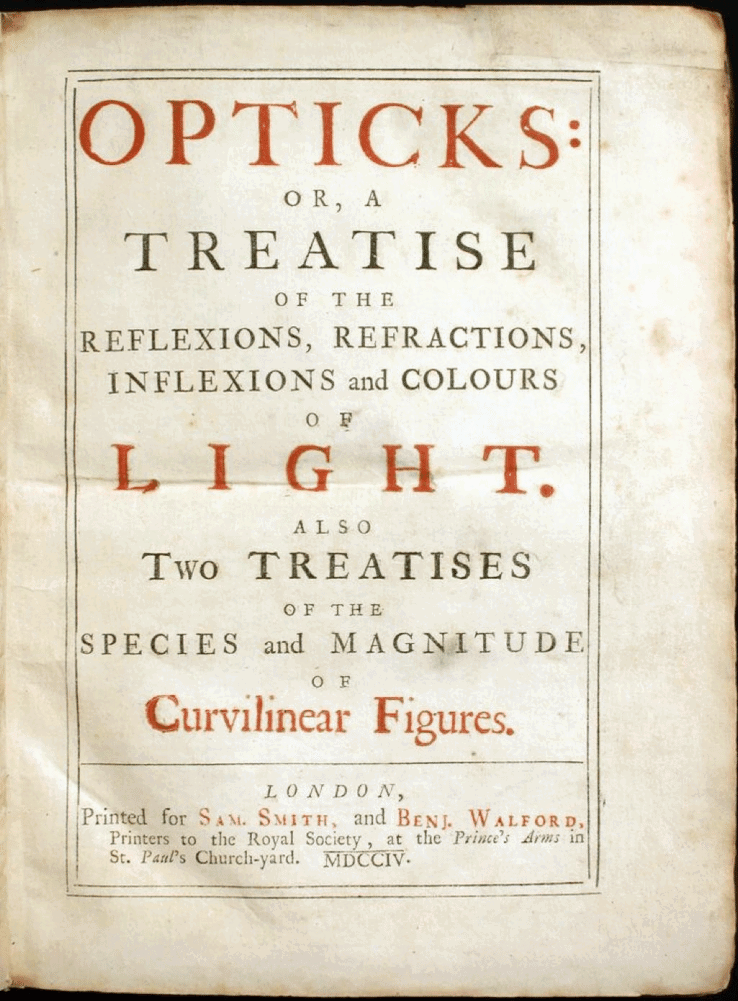History of vacuum as a platform of cosmology I

From Empedocles to Einstein
“The promise to be buried in the void.” This is a part of the lyrics of a Cho Yong-Pil's song, “The Void.” Vacuum that forms the background of the universe, the void, is a medium that can store something, as the lyrics of “The Void” say. In Maxwell's equation, which is evaluated as the second unified theory in physics after Newton's law of motion, vacuum is recognized as a medium with non-zero physical properties like vacuum permeability. Vacuum is not perceived as “nothing.” It is something. In quantum mechanics, particles are just vacuum fluctuations. When a fluctuation stays in one place, it becomes a particle with mass. A fluctuation that does not stay in one place is a wave like light. If the universe is finite, then light will stay in it. Electromagnetic energy remaining in the universe is called the Cosmic Microwave Background (CMB). The microwave observed in the CMB is an electromagnetic wave with a very long wavelength, and when converted into temperature, it is about 2.4K (-270.6°C). Vacuum of the universe is slightly fluctuating with this CMB.
The first through third articles in “The Platform of Physics” deal with the history of vacuum, the cosmic background. From ancient times to modern times, the meaning of vacuum in physics and its relation to physical theories such as the law of gravity are searched from a scientific point of view. In the first article, the meaning of vacuum is considered focusing on Newton's and Einstein's perspectives on vacuum.
Vacuum in ancient times
Empedocles, an ancient Greek philosopher before Socrates, said that all things in the world consist of four elements: air, fire, water, and earth, and the separation and union of these elements by the power of love and struggle is the origin of creation and destruction of all things. The ancient Greeks of the time of Socrates believed that the universe consisted of five elements: air, fire, water, and earth plus ether. The universe is filled with something different from anything on earth and is called the ether or the fifth element. The ancient cultures of Egypt, Persia, Babylonia, Japan, Tibet, and India all have similar lists, sometimes referring to "air" as "wind" in local languages and the fifth element, or the ether, as "the void." In Homeric Greek, the word αἰθήρ (aithḗr) means “pure and fresh air” or “clear sky.” In Greek mythology, the pure essence that gods breathed, similar to the air that humans breathe, was believed to fill the space in which they lived. (Source: "Aether," GreekMythology.com) Aristotle said that there are stars and planets made of ether and that the ether has local but natural circular motions (Source: George Smoot III. "Aristotle's Physics").
Newton's vacuum
Isaac Newton was a British physicist who lived from the late 17th century to the mid-18th century and was the person who completed classical mechanics as Newton's laws of motion. If there had been Nobel Prize in Physics at that time, he would have won several times. One of Newton's greatest achievements was his discovery of the law of gravity. The law of gravity, also known as the law of universal gravitation, is included in the book “Philosophiæ Naturalis Principia Mathematica” along with Newton's three laws of motion. This three-volume book was published in London in June 1687. As scientific journals in various fields are published regularly these days, there is no need to publish such a book. But at that time, such journals did not exist. There was no platform for scholars to publish their papers and introduce them to the public.

Figure 1. Newton's 1704 book, "Opticks: or a treatise of the reflexions, refractions, inflexions and colours of light."
Newton's law of gravity is expressed in a simple formula. The gravitational force acting on two bodies apart from each other is proportional to the product of their masses and inversely proportional to the square of the distance between the centers of the two bodies. But how did Newton discover the law of gravity, known as the law of universal gravitation? You've probably heard the cinematic story of discovering the law of gravity when an apple in the garden of his home fell over Newton's head. This is not at all unfounded, as the French Enlightenment writer François-Marie Arouet, best known under the pen name Voltaire, wrote about Newton in his 1727 "Essay on Epic Poetry." In this essay, Voltaire describes that Newton first conceived his thoughts about gravity when he saw an apple falling from a tree in his garden. Though it is not true that an apple fell over Newton's head and discovered gravity, it is clear the apple tree had a significant impact on Newton's discovery of gravity.
When Newton presented to the public the law of gravity in the book entitled "The Mathematical Principles of Natural Philosophy," he must have been praised in academic society but also received criticism. Among them, the criticism of Richard Bentley, known as the British theologian and critic, was painful for Newton.
"According to Newton, each star in the universe ought to be attracted towards every other star. They should not remain motionless, at a constant distance from each other, but should all fall together to some central point".
This is the Bentley Paradox. In a letter to Bentley in 1692, Newton pondered the reality of gravity, and wrote "It is inconceivable, that inanimate brute matter, should, without the mediation of something else, which is not material, operate upon and affect other matter without mutual contact." Let's quote some excerpts from Eric Baird's paper, which summarized Newton's concept of vacuum. For Newton, a vacuum is an absolute space completely separate from an object. Newton's absolute space is related to the concept of time and particles of light traveling in a straight line. In a book published in 1704 "Opticks," Newton was also a proponent of wave/particle duality and published a “new” variable-density ether model in which light and matter trajectories were either bent by gravitational fields or deflected by an ether density gradient. Newton’s (flawed) ether model can be considered an early attempt at a curved-space model of gravity. According to Newton, the gravitational field is the new ether, and the transmission of gravity and the bending of light are due to the physical properties of ether. Newton's model of the ether was the first attempt to interpret the space in which the gravitational field exists. Therefore, Baird concludes that Newton's unnoticed and forgotten model of the ether is one of the most seriously missed opportunities in the history of physics of gravity.
Einstein’s vacuum
When you think of a physicist named Albert Einstein, the theory of relativity comes to mind the most. However, Einstein left many achievements in various fields of physics and was awarded the 1921 Nobel Prize in Physics for his theory of the photoelectric effect. Although the photoelectric effect played an important role in the birth of quantum mechanics, Einstein did not accept quantum mechanics to the end by saying that “God does not play dice.” Einstein's ideas about vacuum are well represented in his special theory of relativity. As the term “relativity” implies, it is a concept in contrast to Newton’s absolute space. Einstein's relativity theory tells us that all physical quantities change depending on the relative position of the observer. For example, it is a matter of electricity and magnetism. Electricity can become magnetism according to the observer's coordinate system, and magnetism can also be recognized as electricity according to the coordinate system. The distinction between electricity and magnetism is relative, not absolute.
The special theory of relativity is a theory that deals with physical quantities in space-time in an inertial frame of reference that is not accelerating (gravity does not act). Just as electricity and magnetism are integrated into electromagnetics, in special relativity, time and space are integrated into one concept of space-time. The special theory of relativity was born to describe the motion of an object with its speed comparable to that of light. The premise of this theory is that the speed of light is constant regardless of the observer. To guarantee the constant speed of light, the length contracts, and the time expands. Length contraction and time dilation were concepts introduced from the ether theory of Augustin-Jean Fresnel and Hendrik Lorentz before Einstein's special theory of relativity. When the existence of static ether (luminiferous fluid), which was thought to be a vacuum medium for propagating light, was denied by the Michelson–Morley experiment, a new ether that interacts with the movement of an object was required. This theory interprets that the ether is transformed according to the movement of an object, and this transformation causes the length to contract and time to expand. However, Einstein well described length contraction or time dilation with the special theory of relativity without ether. The existence of ether was completely rejected, accordingly.
However, light bends in a gravitational field and slows down in matter. The refractive index is the speed of light in vacuum divided by the speed of light in a material. Almost all materials have a refractive index greater than 1 (for example, water). Interpreted from the perspective of the special theory of relativity, since the speed of light is constant, time contracts or length expands in water. This is a physics contradiction. The constant speed of light is a "special" situation. P.T. Pappas et al.1 argued that the special theory of relativity is valid only in a one-dimensional space and that if it is extended to a two-dimensional space, contradictions occur.
According to Einstein's theory of general relativity, light is deflected in a gravitational field, and the speed of light changes. This also cannot be dealt with in the category of special relativity. A gravitational field forms around an object due to the distortion of vacuum by the presence of mass. Light bends when passing through a distorted vacuum (space-time). Einstein calculated the deflection angle of light based on his theory of general relativity, and British astronomer Arthur Eddington et al. verified it using a total solar eclipse on Principe Island in West Africa. It was 1919 when the Independence Movement of March took place in Korea. This made Einstein and Eddington famous. This series of processes is well described in the BBC TV movie “Einstein and Eddington.” We recommend that interested readers take a look. However, unlike the premise of the special theory of relativity, Einstein mentioned that the gravitational field dealt with in the general theory of relativity can be regarded as ether. According to him, the reason that the space between objects is distorted is due to that space has its own physical properties. However, Einstein's use of the word "ether" for the gravitational field has received little support in the scientific community. His notion of ether is considered to have played no role in the continued development of modern physics.
1. P.T.Pappas, T.P. Pappas, L.P. Pappas, Special Relativity's Contradiction in Two-Three Dimensions, Part 2, International Journal of Advanced Research in Physical Science, Volume 4, Issue 9, 2017, Page No: 1-5